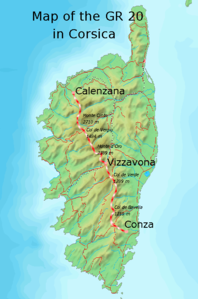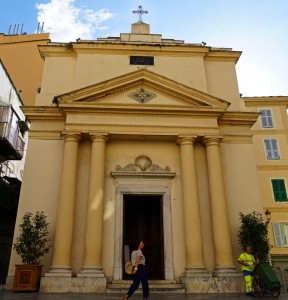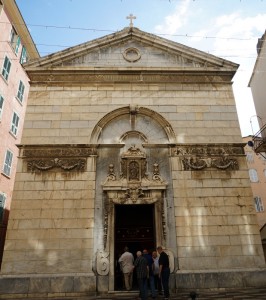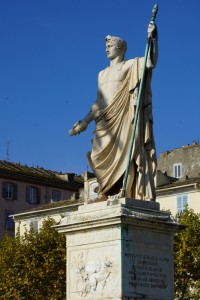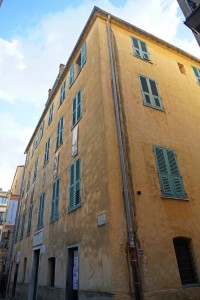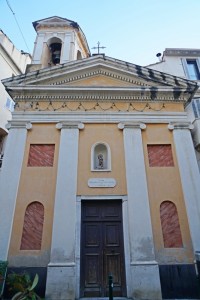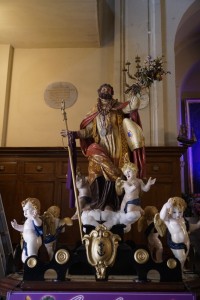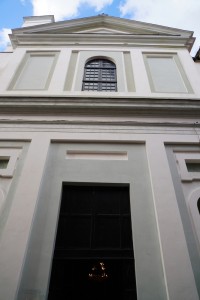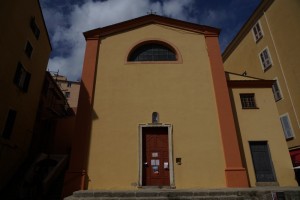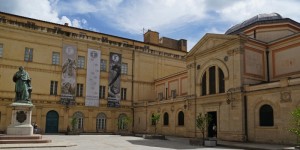Bastia, Ajaccio & Calvi: September 14 – 18, 2016
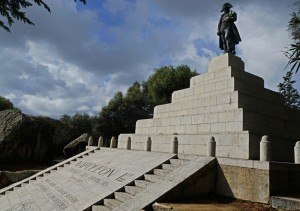 |
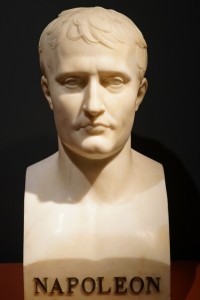 |
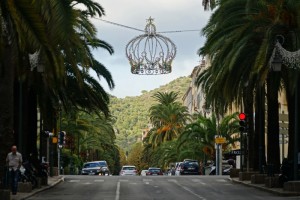 |
Corsica first came to my radar screen as the birthplace of Napoleon Bonaparte. Then I discover its beautiful landscape and fame as a hiker’s paradise. Travel Plan
I have found a 15-day trekking trip with Exodus starting on September 18 which would fit in well with my overland trip with Dragoman in North Africa in late October. I decide to spend a couple of days in Bastia and Ajaccio after my visit to Elba and before joining the Exodus tour in Calvi. After the hiking trip, I plan to spend a few days in Southern Corsica before making my way to Italy by ferry on 6 or 7 October to meet three Hong Kong friends in Rome on October 8 for a 10-day tour in Southern Italy.
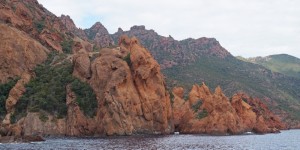 Corsica Formed about 250 million years ago with the uplift of a granite backbone on the western side, Corsica is the fourth largest island in the Mediterranean Sea after Sicily, Sardinia and Cyprus. It is 183km long and 83km wide with a land area of 8680km². Corsica is therefore the most mountainous island in the Mediterranean nicknamed a “mountain in the sea”. Mountains forming a single chain comprise two-thirds of the island with over 120 peaks over 2000m. Today, about 40% of the land mainly in the interior is dedicated to nature reserve.
Corsica Formed about 250 million years ago with the uplift of a granite backbone on the western side, Corsica is the fourth largest island in the Mediterranean Sea after Sicily, Sardinia and Cyprus. It is 183km long and 83km wide with a land area of 8680km². Corsica is therefore the most mountainous island in the Mediterranean nicknamed a “mountain in the sea”. Mountains forming a single chain comprise two-thirds of the island with over 120 peaks over 2000m. Today, about 40% of the land mainly in the interior is dedicated to nature reserve.
History Human habitation can be traced since the Mesolithic era. Lady of Bonifacio dated to about 6570BC has been found in a chambered tomb of Vasculacciu near Bonifacio. The island had ruled by various nations over the course of history: Carthaginians, ancient Greeks, Etruscans, Romans, Vandals and Ostrogoths. It came under the control of the Pisans from 11th century till their defeat by the Genoese in 1284.
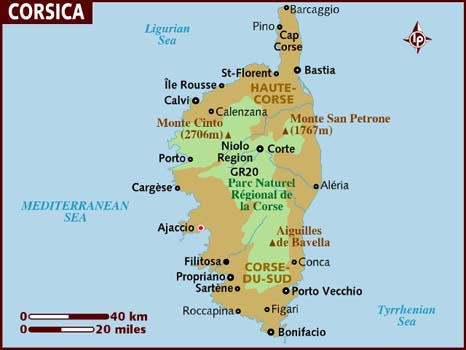 The Genoese rule on the island was contested by the Spanish King of Aragon, local lords and churches and the Pope. In 1450, Genoa ceded the administration of the island to its main bank, the Bank of Saint George. The relationship with local inhabitants was strained as the Genoese did not allow the Corsican nobility to share in the government of the island and oppressed the inhabitants with a heavy tax burden. Nevertheless, the Genoese had introduced on a large scale the chestnut tree, improving diet of the population and built a chain of towers along the coast to defend the island from attacks from pirates from North Africa.
The Genoese rule on the island was contested by the Spanish King of Aragon, local lords and churches and the Pope. In 1450, Genoa ceded the administration of the island to its main bank, the Bank of Saint George. The relationship with local inhabitants was strained as the Genoese did not allow the Corsican nobility to share in the government of the island and oppressed the inhabitants with a heavy tax burden. Nevertheless, the Genoese had introduced on a large scale the chestnut tree, improving diet of the population and built a chain of towers along the coast to defend the island from attacks from pirates from North Africa.
In 1729, the Corsican Revolution for independence began. It wasfirst led by Luigi Giafferi and Giacinto Paoli and later by Paoli’s son, Pasquale Paoli. In 1736, Pasquale Paoli proclaimed an independent Kingdom of Corsica and a Corsican Republic from 1755 to 1769 with Corte as the new seat of government. Exhausted by 40 years of fighting, the Republic of Genoa decided to sell the island to France: the deal was sealed in 1768 with the signing of the Treaty of Versailles. The Corsican Republic was finally crushed by a large army and Paoli went into exile to England. Following the outbreak of the French Revolution in 1789, Paoli returned to Corsica from Britain and with the aid of the British forces established an Anglo-Corsican Kingdom. But following Spain’s entry into the war, the British decided to withdraw from Corsica in 1796 and the island returned to French rule.
At the end of the Napoleonic Wars, Corsica was briefly occupied by British troops in 1814 and the Treaty of Bastia gave the British crown sovereignty over the island. It was later repudiated and the island was returned to France.
Corsica is one of the 18 regions of France with a population of about 330,000. As a territorial collectivity with two departments namely Upper Corsica and Southern Corsica, Corsica enjoys a greater degree of autonomy from other French regions. Located 90km from Tuscany and 11km from Sardinia but 170km from Côte d’Azur in Southern France, Corsica is inevitably more ‘Italian’ than ‘French’ in both appearance and culture. The native Corsican language is closely related to the Italian language and many Corsicans are descendents from Italy.
Corsicans known to be fiercely independent people have tense relations with France. Feeling neglected and impoverished, some Corsicans have seen autonomy from France as the solution to the island’s problems. A nationalist movement began in the 1920s and eventually led to armed nationalist struggle in 1975. Ever since Corsican nationalism has been a feature of the island’s politics.
Running from northwest to southeast of the island, the 180km-long trail has been described Europe’s finest and toughest trek owing to its outstanding landscape with varied terrains on one hand and level of difficulties owing steep rocky climbs and lack of water with basic cramped accommodation at official refuges en route. Starting at Calenzana and finishing at Conza and divided into the north and south parts with 15 stages, the trail with variation of 10,000m in height can be walked in 15 days. In July 2014, Guillaume Peretti set the fastest record known time of 32 hours. The highest peak, Monte Cinto at 2706m and the most notorious section, the Cirque de la Solitude with fixed ladders, chains and cables are both located in the north part (from Calenzana to Vizzavona) which is known for the steep and rocky terrains.
September 14 Wednesday: Elba, Italy – Bastia, Corsica (by ferry)
I took the Corsica Ferry leaving Portoferraio at 8pm and arrived in Bastia at 9:30pm. I had booked a room online with Christine and Luiggi whose flat is located on Bd Paoli and not far from the port. Tonight I and two Australian cyclists were the only guests staying at the guesthouse with three rooms. I had an en-suite with a double bed and had a good sleep.
September 15 Thursday: Bastia – Ajaccio
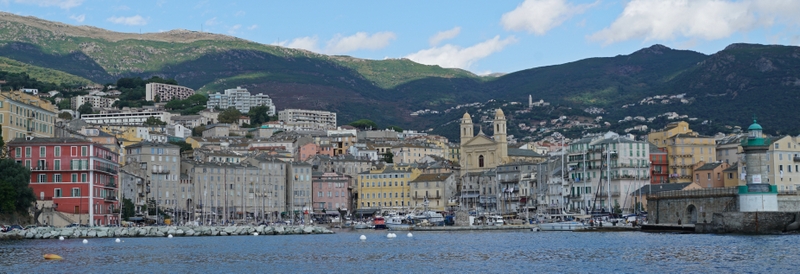 During the Genoese rule, Bastia was developed around two historical centres: terra nova and terra vecchia. It was the only true city in Corsica until the late 18th century. Baroque architecture, the style of the period, was introduced to the island and Bastia boasts the largest number of civil historic buildings in all of Corsica. It is now the second largest commune on the island. Despite its mountainous terrain, the island is served by a 232km-long metre gauge railway with the main line running between Bastia and Ajaccio and a branch line from Ponte Leccia to Calvi.
During the Genoese rule, Bastia was developed around two historical centres: terra nova and terra vecchia. It was the only true city in Corsica until the late 18th century. Baroque architecture, the style of the period, was introduced to the island and Bastia boasts the largest number of civil historic buildings in all of Corsica. It is now the second largest commune on the island. Despite its mountainous terrain, the island is served by a 232km-long metre gauge railway with the main line running between Bastia and Ajaccio and a branch line from Ponte Leccia to Calvi.
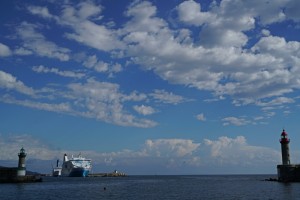 |
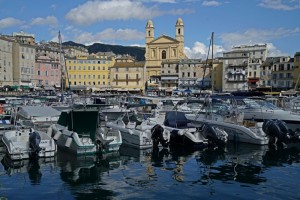 |
The first thing I did in Bastia was to sort out my travel plan for the next few days. After looking at a few options, I decided to visit Ajaccio before going to Calvi on September 17. There are two daily trains between Bastia and Ajaccio/Calvi. After having brought a ticket (about €20) for the 4:57pm train, I began my sight-seeing tour on foot in Bastia. I picked up a few maps and information on bus timetable from the tourist office.
The city though small is compact with many beautiful buildings and squares. The most prominent and imposing structures in the old town are the Eglise Saint Jean Baptiste and the Genoese Governors’ Palace(building commencing around 15th century). I began my walk at the elegant Place Saint-Nicolas at the centre of which is a statute of Napoleon.
I followed the pedestrian walk and soon arrived at the Oratoire Saint Roch(1614) which looks impressive. A few steps away is the Eglise Saint Jean Baptiste (built between 1636 and 1671), one of Bastia’s landmark buildings. As a funeral service was taking place, I saw many locals dressed in black filing past the coffin to pay their last respect to the deceased.
Then I walked around the picturesque old port before walking uphill to the citadel through the Rmoieu Garden. Today the Genoese Governors’ Palace houses the Museum of Bastia with a permanent exhibition spreading over 18 halls dedicated to the city’s history. The museum has a rich collection of paintings many of which were donated by Giuseppe Sisco (1748-1830), a surgeon to the pope and Cardinal Fesch (1763-1839), the uncle of Napoleon who was one of the most famous art collectors of his period. The museum is well laid out with exhibits on three themes namely the city’s urban evolution from 15th to 21st centuries, Bastia as the centre of political, social and economic powers and the city as a cultural hub from 17th to 20th centuries.
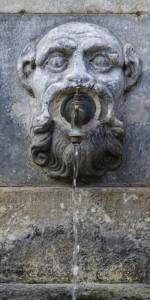 |
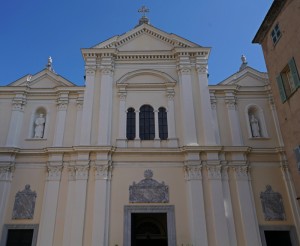 |
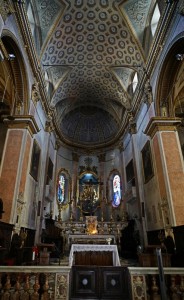 |
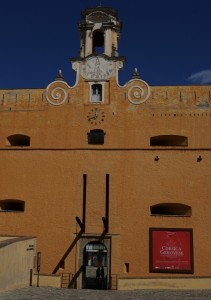 |
There is a special exhibition on Bastia and Genoa showing the lasting influence of the Doge and the Genoese on the region. I strolled aimlessly along the narrow alleys before arriving at St Marie Cathedral. A half-hidden alley led me to Oratoire de la Sainte Croix behind the cathedral. But it was closed for a funeral ceremony.
Time for lunch. I stopped at Restaurant St Vincent close to the Palace with excellent sea views. I had a Corsican calzone, an Italian oven-baked folded pizza that originated from Naples. I prefer it to the normal pizza which is often too dry. It began to drizzle.
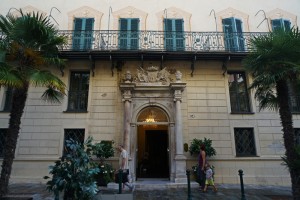 Before leaving Bastia, I went to check sailing schedules to Italy from Bastia and other ports. It started to rain heavily and I had to find shelter half-way to the train station.
Before leaving Bastia, I went to check sailing schedules to Italy from Bastia and other ports. It started to rain heavily and I had to find shelter half-way to the train station.
The train left on time and I arrived in Ajaccio after 8pm without hotel reservation. I walked from the station to the main street and then the port which has half a dozen of hotels. I went to four of them but they were full. The 3-star Hotel du Golf still had a suite which cost over €200 a night. Finally I found a room at the 4-star Hotel Palazzu U Domu close to Napoleon’s House. It was late and the manager offered me a good discount (€170) for a spacious and comfortable room. As I had overspent on accommodation, I went to bed with an empty stomach (just joking – I had a big lunch and was still full!)
September 16 Friday: Boat excursion to Scandola – Girolata
A ‘must-see’ in Corsica is the Scandola Reserve, a World Heritage Site located between Punta Muchillina and Punta Nera on the west coast of the island. Covering a total area of 19.19km² (9.19km² on land and 10km² at sea), the reserve has two sectors, the Elpa Nera inlet and the peninsula of Scandola. The jaffed and sheer cliffs contain many grottos and are flanked by numerous stacks and almost inaccessible islets and coves. The coastline is also noted for its red rhyolite cliffs, column jointed basalt, sand beaches and headlands.
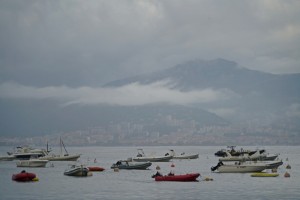 I had to force myself out of bed at 7am in order to catch the boat leaving for the reserve at 8am. Then I discovered it was raining outside. The manager of the hotel warned me that the boat trip would be cancelled in bad weather. I did not give up and went to the pier. I was lucky to get a ticket €57 and arrived two minutes before departure. About 20 passengers were already on board.
I had to force myself out of bed at 7am in order to catch the boat leaving for the reserve at 8am. Then I discovered it was raining outside. The manager of the hotel warned me that the boat trip would be cancelled in bad weather. I did not give up and went to the pier. I was lucky to get a ticket €57 and arrived two minutes before departure. About 20 passengers were already on board.
The sky was grey. Soon there were thunders and heavy rain. The boat picked up 20 more passengers from Porticco. It was cold and miserable. Most passengers stayed inside and I dozed off.
By the time I woke up, I was thrilled to see blue sky. I rushed out to the deck to find stunning scenery and rock formations around Gulf of Porto.
The boat went right up to the cliffs so that we could take a close look at the grotto. The guide gave lots of information on the geology and land formations. But I might have only taken in 10% of what he had said. Anyway, looking at the map, I knew roughly where I had been: the Reserve of Scandola, Calanques de Piana and Cape Girolata before arriving at the village of Girolata for lunch after 12 noon. I had a set lunch for €19 with fish soup as starter, a stewed pork as the main course and two scoops of ice-cream as dessert. The portion of the main course was so huge that I had to skip dinner.
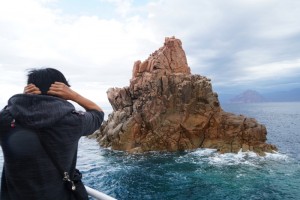 |
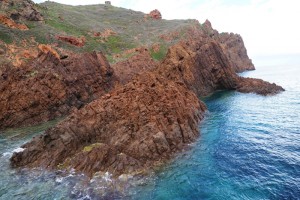 |
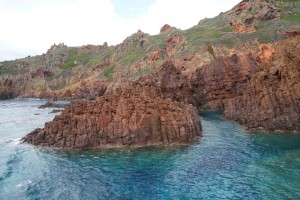 |
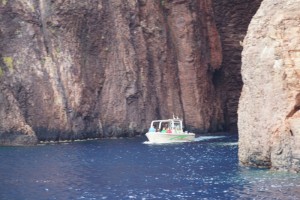 |
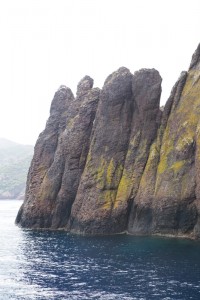 |
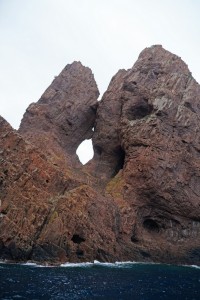 |
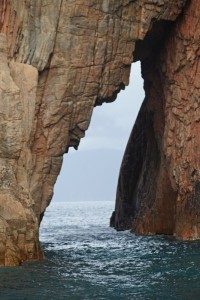 |
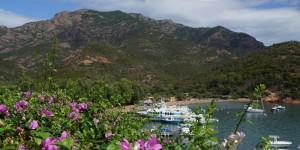 |
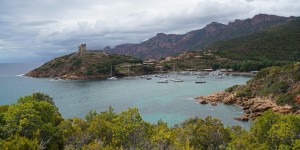 |
At 2:30pm, we began the return journey. We had a tour of Cape Rosso and later passed through the Îles Sanguinaires. We saw plenty of defense towers including the Tour de la Parata andthe Tour de Capitello near Porticcio. I was back in Ajaccio at 6pm.
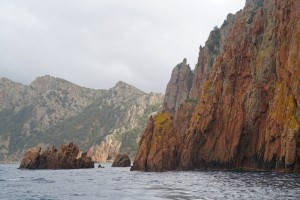 |
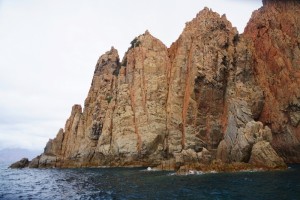 |
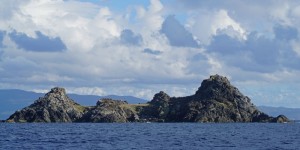 |
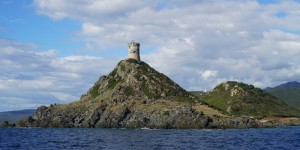 |
I had an enjoyable stroll along the vibrant port area and the old town where I watched sunset. Tonight, I moved to the Hotel du Golf where I paid €110 for a basic room. I find the room in the four-star hotel which is much bigger and comfortable, more value-for-value. I spent the whole evening working on the epilogue on my last three-month trip and was relieved to have it uploaded to my website before going to bed.
September 17 Saturday: Ajaccio – Calvi
Napoleon Bonaparte (1769-1821)
Napoleon Bonaparte was born Napoleone di Buonaparte on August 15, 1769 in Ajaccio, one year after Corsica formally became part of France. His ancestors were descendants from minor Italian nobility of Tuscan origin, who had come to Corsica from Liguria in the 16th century. His family moved to live in France when he was nine years old. In 1784, he was admitted to the elite École Militaire in Paris and became the first Corsican to graduate from this prestigious military college.
Napoleon was one of the greatest commanders in history and a political leader who rose to prominence during the French Revolution (1789-1799). In 1798, he led a military expedition to Egypt that served as a springboard to political power. After successful engineering a coup in November 1799, he became the First Consul of the Republic. In 1804, he proclaimed himself the First Emperor of the French.
From 1804 to 1814, Napoleon led France against a series of coalitions in the Napoleonic Wars. At the Battle of Leipzig in October 1813, a large Allied army of the 6th Coalition defeated the French army. In the spring of 1814, the Allied captured Paris forcing Napoleon to abdicate in April. He was exiled to Elba, Italy and the Bourbons were restored to power. Napoleon escaped from Elba in February 1815 to return to Paris. The Allies formed the 7th Coalition that defeated Napoleon at the Battle of Waterloo in June 1815. He was exiled to St Helena in the South Atlantic where he died on May 5, 1821 at the age of 51. His remains were returned to France and a state funeral was held on December 15, 1840. In 1861, his remains were entombed in a porphyry sarcophagus in the crypt under the dome at Les Invalides in Paris.
Napoleon remains one of the most celebrated and controversial political figures in history. His existence has constituted an indissoluble link between France and Corsica. Napoleon had brought liberal reforms to territories he had conquered and controlled. The Napoleonic Code has influenced the legal systems of more than 70 nations around the world.
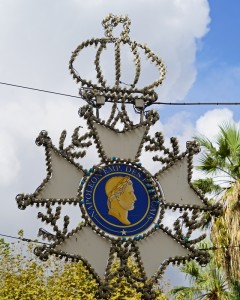 |
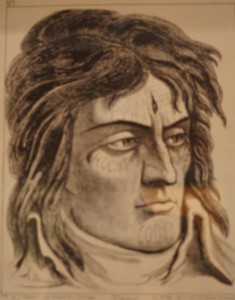 |
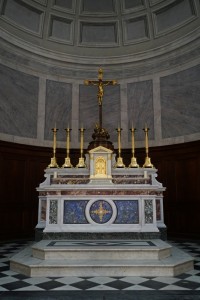 |
Ajaccio built in 1462, is the regional capital and the largest commune of Corsica with 60,000 inhabitants. But there is no bus service between Ajaccio and Calvi which is 160km away. As a result, I had to take a five-hour train either around 8am or 3pm. I therefore decided to take the afternoon train at 3:12pm so that I could spend half a day in Ajaccio.
The city has two walking routes namely the Genoese Ajaccio (Place Foch, the Citadel, Saint Erasme Church (a Seaman Church) and the Cathedral) and the Imperial Ajaccio (Chapel Imperial – Fesch Museum, Salon Napoleon, City Hall, Fountain of 4 Lions and Statue of 1st Consul, Place Foch, Bonaparte House, Napoleon and his brothers and Carsone).
I had a lovely time visiting the main attractions of both routes. When I reached Place Foch, I was delighted to find a lively morning market. I sampled dried meat, cheese, bread etc.
Then I walked past the Church of St John the Baptist(1581), the oldest church in Ajaccio before spending some time in the Cathedral with sumptuous decorations. I enjoy the peace and quietness.
Not far away is the Saint Erasme Church with many sailing boats hanging from the ceiling. I like this simple church which a rustic and authentic atmosphere. I followed the Bd General de Galle which leads me to the Place du General de Gaulle and finally the Carsone with Napoleon’s Grotto and a monument of Napoleon in full uniform standing at the top of a pyramid.
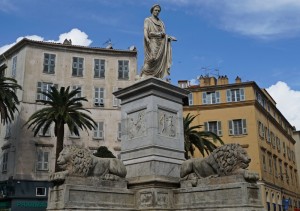 |
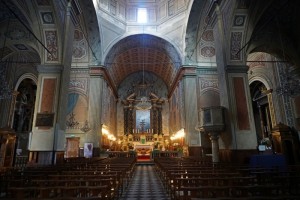 |
I returned to the old town and went to the fish market. I watched with amazement at a lady in her ‘80s who was cutting and cleaning fish for her customers. She looks healthy and cheerful! I was hoping to visit the Salon Napoleon in the City Hall. Unfortunately, it is closed on weekends.
Then I walked back to Napoleon’s House where he was born. I queued up for about ten minutes and spent over half an hour touring the big house which is an indication of his privileged background. What has amazed me most is a remark made by the man in front of me in the queue. He said, “Napoleon was Italian and not French”. He had a point: Napoleon had become the First Emperor of the French owing to his military ingenuity as well as luck. I am curious to learn more about Napoleon and the views of the French and Italian on him.
Next I visited the Imperial Chapel which is essentially a mausoleum of Napoleon’s family. I enjoy the rich art collection at the Fesch Museum which is next to the Chapel.
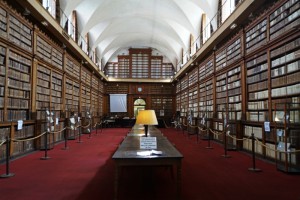 |
Before heading to the train station, I had lunch at Restaurant St Pierre. I ordered mussels in Corsican style with cheese and ham. It’s a mistake: it’s very salty and rich thus taking away the taste of fresh mussels. The waiter was very kind and offered to change for me. I thanked him but it was my own mistake.
The train left on time and was full. But half the passengers got off at Corte. I had a scenic ride and watched a most beautiful sunset with pinkish, rosy, golden and orange colours. But as the windows were dirty, I did not bother to take a photo.
I arrived at the Calvi train station after 8pm. I planned to spend the night at Hotel Les Arbousiers where the group would stay on September 18. But as it was fully booked, I found at Hotel Sole Mare (€60 a night) near the citadel.On the recommendation of the receptionist, I went to the port and had a set menu for €21 at Comme Chez Moi. The food was good but the portion was too large. I could hardly finish it.
15-day Trip –Corsica: The GR20
Day 1 September 18 Sunday: Calvi
Located on the northwest coast of the island, Calvi is 95km from Bastia and 160km from Ajaccio. It is Corsica’s fifth largest commune. According to legend, Christopher Columbus came from Calvi, which at the time was part of the Genoese Republic (This is unproven).
I spent the morning strolling around in the imposing citadel built by the Genoese from the 13th to 16th centuries. As it was very early, I was able to exploring the old town within the citadel without other tourists around. I find the narrow cobbled stone streets and passages lined with many tall stone houses atmospheric.
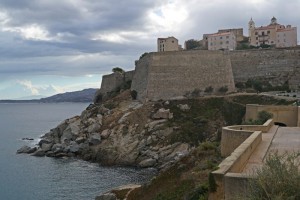 |
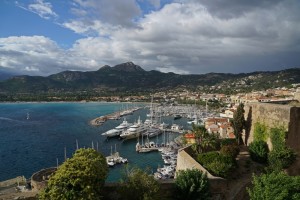 |
When I arrived at the doorstep of the old Cathedral of St Jean Baptiste, I found it was closed. But some workmen were moving sound equipments out from a side door. I slipped in and found some amazing old paintings of the 15th century. The 16th century Oratory Saint-Antoine is also worth visiting.
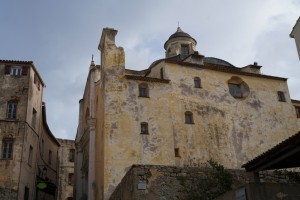 |
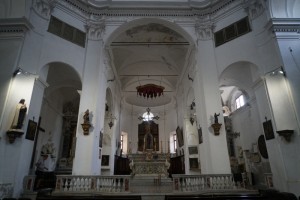 |
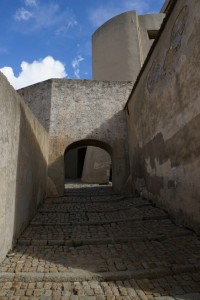 |
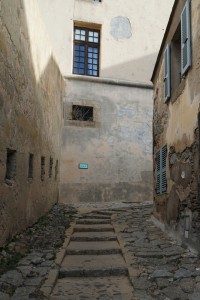 |
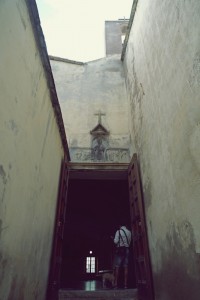 |
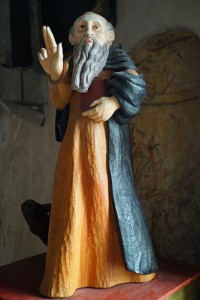 |
After checking out at 11am, I walked over two kilometres with my suitcase before reaching Hotel Les Arbousiers. Soon after I arrived, I met Jo, leader of the Exodus who had just arrived with the UK group members. Soon we had a brief meeting where I met Simon (the other leader), Mike, a director of Exdous, Jane and Ian, Phil, Jeff, Ella, Carolina, Steph and Sarah from the UK, and Gemma from Ireland. I met Karen from the Netherlands at dinner.
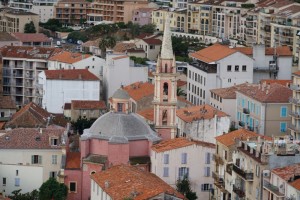 |
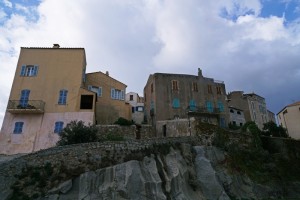 |
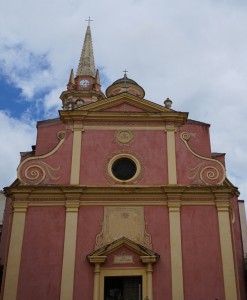 |
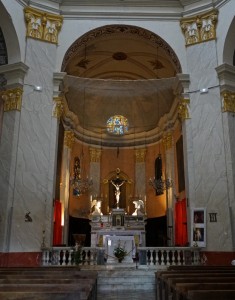 |
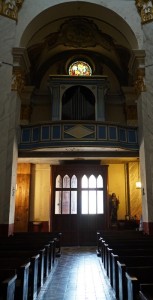 |
Ella is my room-mate. I am the oldest participant while the youngest one is 42 years old. The group is jolly and energetic. We had free time in the afternoon and I walked back to the harbour area to visit the pink baroque style Church of Sainte-Marie-Majeure (16th century). I returned to the same area for the group dinner in the evening.


